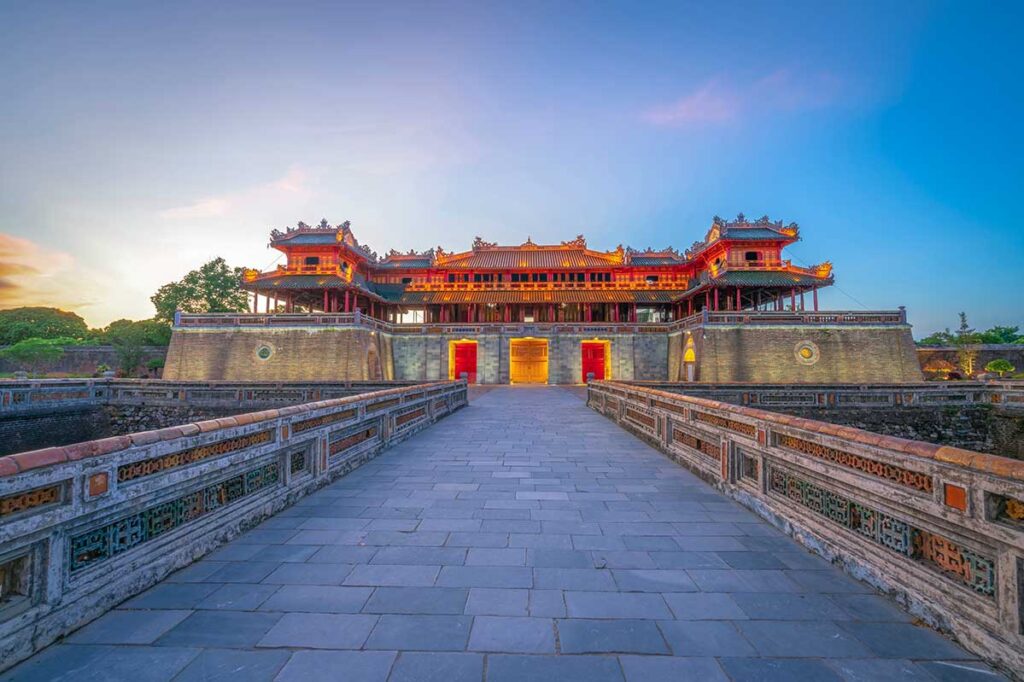What is Phu Van Lau Pavilion?
Phu Van Lau Pavilion means “Pavilion of Edicts,” a name that reflects its historic role as the public notice board of the Nguyen Dynasty. Here, royal announcements, edicts, and the results of prestigious imperial examinations were formally posted for the public to read.
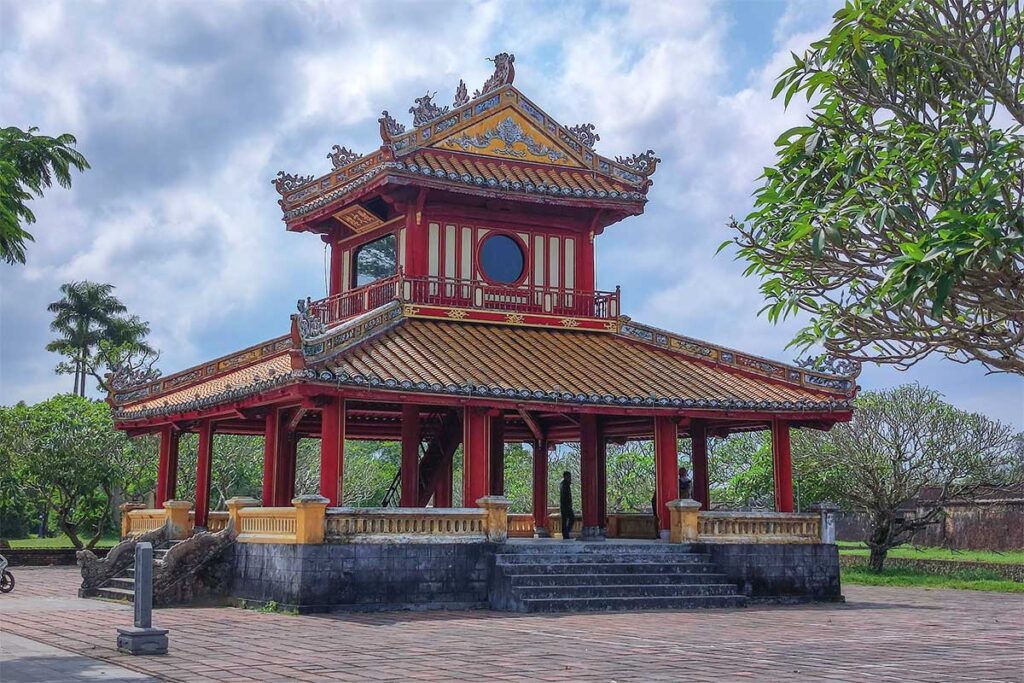
Architecturally, it is a graceful two-storey wooden structure with a yellow-tiled roof and 16 dark-red pillars. The ground floor is open and spacious, designed for easy public access, while the upper floor features wooden balustrades and decorative motifs.
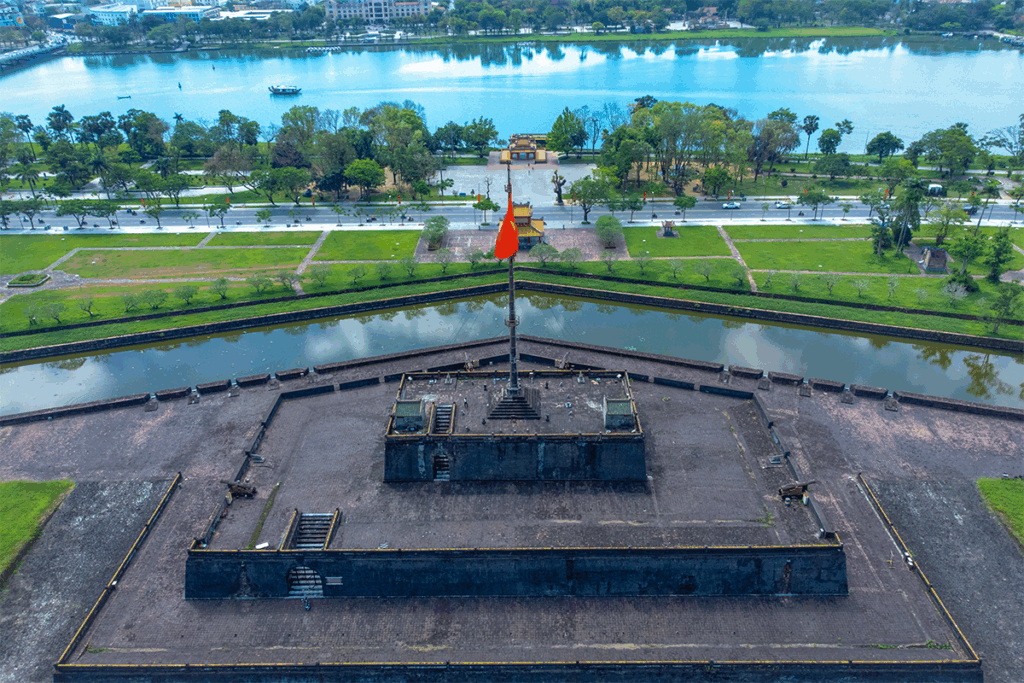
The pavilion sits just outside the Imperial Citadel’s main entrance, directly facing the Flag Tower and the Perfume River. Its prominent location made it both a practical place for proclamations and a symbolic link between the royal court and the people of Hue.
History of Phu Van Lau
In the early years of the Nguyen Dynasty, imperial announcements were posted at a small structure called Bảng Đình, located outside the main gate of the Citadel. By 1819, Emperor Gia Long decided to replace it with a larger, more elegant building that would reflect the dignity of the royal court and provide a prominent place to display important documents. The result was Phu Van Lau, meaning “Pavilion of Edicts,” a two-storey pavilion where royal decrees, examination results, and other official notices were presented to the public.
The pavilion quickly became a focal point for public ceremony. In 1829, Emperor Minh Mang staged a dramatic spectacle here—a fight between a tiger and an elephant—so that the royal family and court could watch from nearby. In 1843, Emperor Thiệu Trị added a stele house beside the pavilion, inscribing his poem Hương Giang Hiểu Phiếm (“Morning Boat Trip on the Perfume River”), highlighting its scenic and cultural significance.
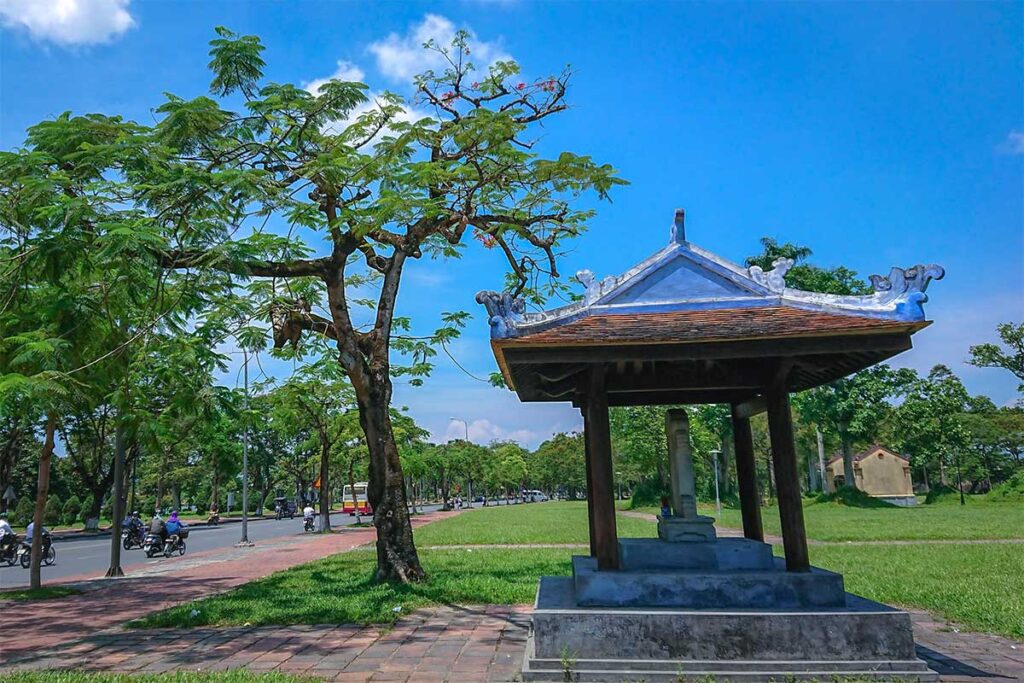
Over its two centuries of history, Phu Van Lau has survived storms, war, and neglect. A devastating typhoon in 1905 required major reconstruction, and more recently, termite damage in 2014 led to another restoration. Despite these challenges, it still retains its original Nguyen-dynasty design and remains a symbol of imperial authority and public life in Hue.
On the 50,000 VND Note

Phu Van Lau Pavilion is featured on the back of Vietnam’s current blue–purple polymer 50,000 VND banknote, alongside Nghênh Lương Pavilion on the Perfume River. Its presence on the currency highlights the pavilion’s cultural and historical importance as part of Hue’s imperial heritage. The design captures both structures in their riverside setting, making this modest but meaningful landmark one of the most recognisable images in daily Vietnamese life.
Visiting today: Practical Guide
How to get there
Phu Van Lau Pavilion is located right outside the Citadel walls, close to the main entrance of Hue Imperial City. It’s next to the Perfume River and directly faces the Flag Tower. You can reach it on foot from the city centre or arrive by taxi/Grab and then continue through the Citadel gate toward Ngo Mon Gate, the official entrance to the Imperial City.
Opening Hours & Entry
As a public riverside landmark, Phu Van Lau has no entry fee and no set hours. You can see it at any time, though most people include it as part of an Imperial City visit.
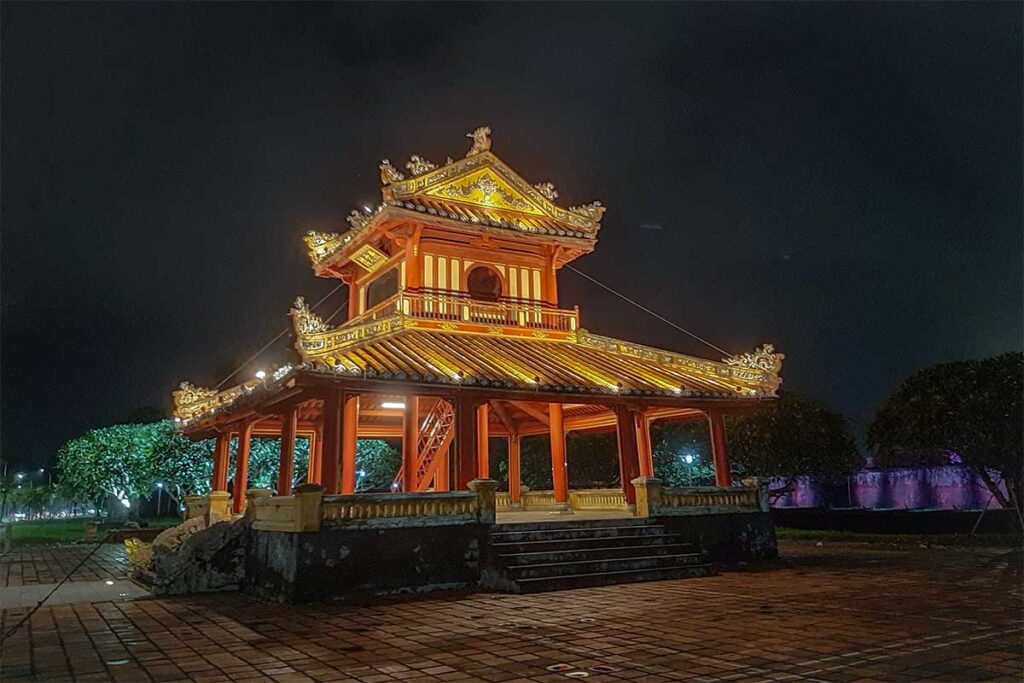
What to See & Do
Phu Van Lau itself is modest in size and detail, so most of the interest comes from its setting. From here you get a direct view of the Flag Tower rising over the Citadel walls, with the Perfume River flowing just behind you and the cityscape on the opposite bank.
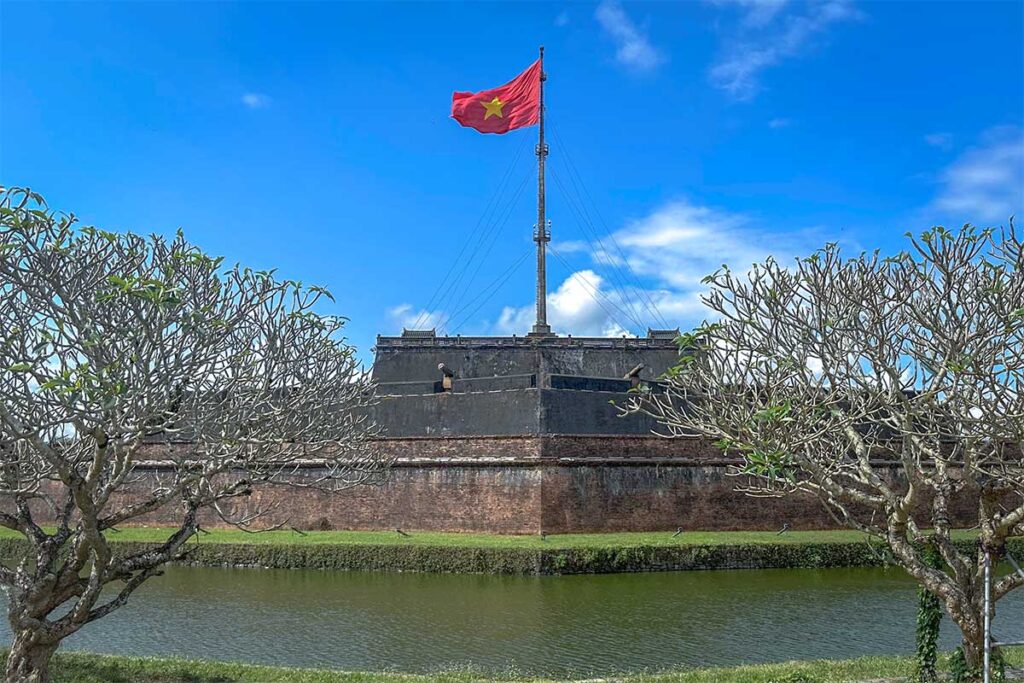
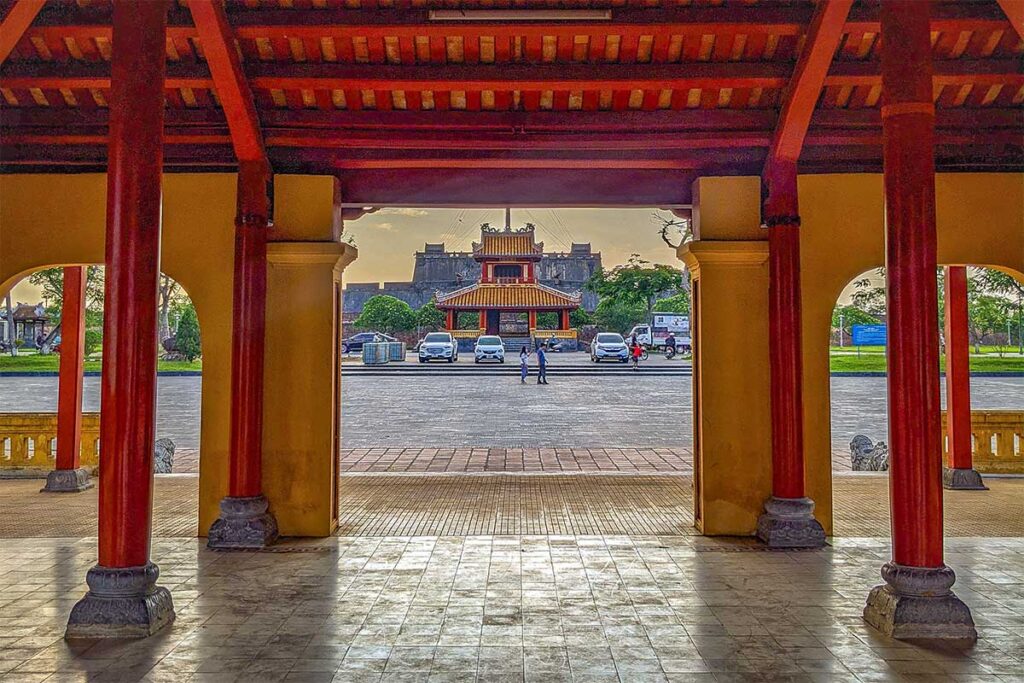
It makes a quick but photogenic stop on the way into the Imperial City—some visitors even hold up a 50,000 VND note to match the pavilion in the background. If you have a few minutes, you can also look for the nearby stele house with Emperor Thiệu Trị’s poem. While it won’t rival the grandeur of Hue’s palaces, it’s an easy, free landmark to tick off before stepping through the main gate into the Imperial City.


